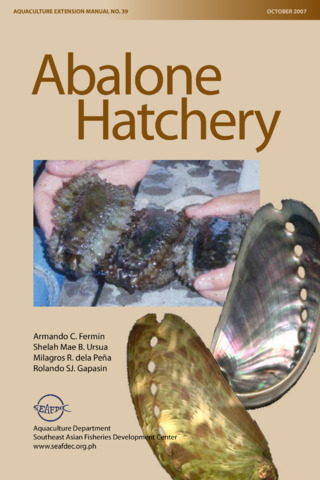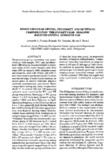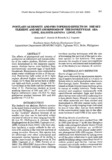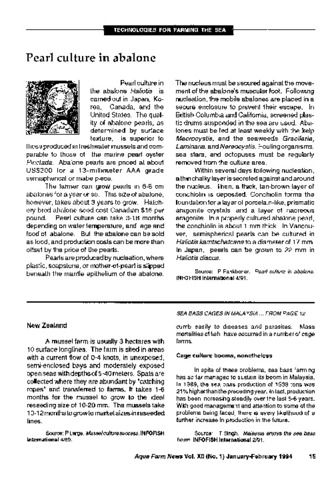Abalone hatchery
Share
Abstract
This manual contains information on abalone hatchery operation, including site selection, design, culture of natural food, broodstock management, spawning, nursery, packing and transport, and profitability analyses.
Suggested Citation
Fermin, A. C., dela Peña, M. R., Gapasin, R. S. J., Teruel, M. B., Ursua, S. M. B., Encena II, V. C., & Bayona, N. C. (2008). Abalone hatchery. Tigbauan, Iloilo, Philippines: SEAFDEC Aquaculture Department.
Subject
Taxonomic term
Collections
Related items
Showing items related by title, author, creator and subject.
-
Spontaneous spawning, fecundity and spawning periodicity in the donkey's ear abalone Haliotis asinina Linnaeus 1758
Fermin, Armando C.; Gapasin, Rolando S.J.; Teruel, Myrna B. (Phuket Marine Biological Center; Phuket Marine Biological Center Special Publication 21(1), 2000)Spontaneous group spawning was monitored in wild-caught (WC) and hatchery-bred (HB) abalone broodstock (Haliotis asinina) held in duplicate tanks at 1:3 (male: female) ratio from June 1997 to January 1999. Abalone ... -
Postlarvae density and photoperiod effects on the settlement and metamorphosis of the donkey's ear abalone, Haliotis asinina Linne, 1758
Fermin, Armando C.; Gapasin, Rolando S. J. (Phuket Marine Biological Center, 2000)The effects of photoperiod and density of postlarvae on settlement and metamorphosis of the native abalone, Haliotis asinina were determined in two separate experiments. Abalone larvae were hatched from spontaneously ... -
Pearl culture in abalone
Southeast Asian Fisheries Development Center, Aquaculture Department (Aquaculture Department, Southeast Asian Fisheries Development Center, 1994)The article discusses pearl culture in abalone which is commonly carried out in Japan, Korea, Canada, and the United States. Abalone pearl formation is also discussed.






